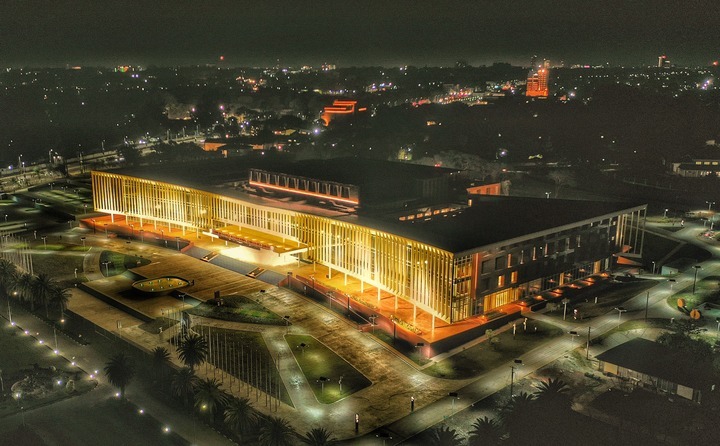BRICS enlargement
Why more BRICS members are not necessarily better

The BRICS summit scheduled for August 2023 in South Africa was followed with keen interest even before it began. Russia’s President Vladimir Putin had been invited to the meeting despite being the subject of an international arrest warrant. He ultimately cancelled “by mutual agreement”.
But Putin’s participation was not the only reason for the heightened interest. It was also fuelled by the BRICS members’ clear endeavours to position the group as a global player. Against the backdrop of a global reconfiguration of alliances, the enlargement of the bloc (BRICS+) agreed in Johannesburg was a signal. It now remains to be seen how firmly the alliance of so-called non-aligned states can consolidate itself as an agent for the interests of the “global south” – and whether that alliance will pose a further challenge to the declining hegemony of western democracies.
The proportion of democratic countries in the group decreased with the accession of the new BRICS+ members at the beginning of 2024. Egypt, Ethiopia, Iran and the United Arab Emirates (UAE) are not renowned for strengthening protection and respect for human rights. The same applies to Saudi Arabia, which has not yet formally finalised its membership. But enlargement has increased the group’s economic – and particularly financial and resource – options for shaping global governance, not least because of the greater influence it could exercise in the area of fossil fuels.
The expanded grouping represents some 3.5 billion people, which is around 45 % of the world population. Its members’ economies have an aggregate volume of $ 28.5 trillion, or nearly 30 % of the estimated annual gross world product. Through Iran, Saudi Arabia and the UAE, the BRICS+ countries now produce more than 40 % of the world’s crude oil.
However, the individual members’ contributions to these figures differ considerably. According to the World Bank, China alone accounts for almost two thirds of the bloc’s total economic output, with a contribution of close to $ 18 trillion. In comparison to that, the outputs of the other members are modest. In the middle ground are India ($ 3.4 trillion), Russia ($ 2.2 trillion), Saudi Arabia and Brazil ($ 1.9 trillion each), followed by the “dwarf” economies of UAE, Egypt, South Africa, Iran and Ethiopia with $ 0.5 to $ 0.3 trillion each. The difference in the annual per capita income of the population is similarly large, albeit in a different order, with the two Arab states clearly ahead of Russia and China, followed by Brazil and South Africa.
The Banque de France points out in a recent analysis that only eleven trade agreements have been concluded between BRICS+ members. That is out of a possible total of 45 regional trade agreements. What is more, economic relations with G7 countries (Germany, France, Italy, Japan, Canada, USA and UK) are significantly more important than those within BRICS+. Although Russia is China’s largest trading partner within the bloc, it is only its tenth largest partner in the world.
The BRICS+ countries account for around a quarter of global exports. However, only 15 % of exports are to countries within the bloc. Trade between BRICS+ members accounted for 3.7 % of global trade in 2021. By far the largest part of this – 3.2 % – was between the original five BRICS countries. These figures suggest that the reorganisation of global trade and exchange relations that is hoped for may for now remain wishful thinking.
Renminbi in place of the dollar
As for monetary policy, the BRICS countries ambitiously declared their intention to replace the dollar with a BRICS reserve currency even before the 2023 summit. But the widely differing performances of the members’ economies present a considerable challenge to such a step, even though the Chinese state bank has now substituted the renminbi for the dollar in many intra-BRICS+ exchange relationships. This indicates that a cryptocurrency for trade transactions could at least be practicable. Iran, Russia and China in particular have already signed agreements to trade in local currencies. However, these can at best relativise the dominance of the dollar in terms of real global trade relations.
In view of currency and financial policy restrictions, a peg to the renminbi also holds little appeal for international investors because it is risky. Furthermore, there is new competition for an internal BRICS+ reserve currency from the riyal (Saudi Arabia) and the dirham (UAE). India is also endeavouring to strengthen the role of the rupee in international business, while the Russian rouble is largely out of the running at present due to the sanctions imposed over the war against Ukraine. In each case, however, convertibility and volatility remain a challenge.
Enlargement has not reduced internal geostrategic conflicts. The replacement of Brazil’s Trump ally Jair Bolsonaro by veteran leftist Luiz Inácio Lula da Silva may have brought relief but the relationship between India and China remains tense. Moreover, enlargement comes with acceptance of other disruptive factors arising from potential regional rivalries. Ethiopia and Egypt are embroiled in a long-running conflict over the use of the Nile’s waters, with no end in sight. Iran and the UAE are anything but close friends. These internal dissonances could present obstacles to decision-making.
The fact that six of the countries are also members of the G20, the most important forum of industrialised and emerging countries, could in turn strengthen the role of the BRICS+ as the mouthpiece of the “global south” and promote lobbying thanks to its greater influence. The fact that Brazil, which is chairing the G20 this year, is inviting the UAE as a guest, points in this direction.
As in India last year, however, the G20 finance ministers failed to agree on a joint final declaration at their São Paulo meeting on the 1st of March. This was mainly due to differences over assessments of the wars in Ukraine and Gaza. The prospect of multilateral consensus-building is waning. It is hard to say how much BRICS+ will do to disrupt or strengthen common ground within the global community. There is no reason to expect a significant shift in the situation. Influential roles are likely to remain confined to a few members – primarily the permanent members of the UN Security Council, China and Russia.
Forty new candidates
According to “TV BRICS”, the international network of media companies in the BRICS+ countries, there are more than 40 more countries aspiring to membership. That long queue would promote diversity but certainly not unity. Many governments’ desire to join the BRICS+ club may stem from a need to forge new alliances. They are also driven by disappointment since the collapse of the Soviet regime and the demise of the Non-Aligned Movement. Due to global polarisation, however, they are anything but united in their actions. It is safe to say that those differences will also come to light in an even bigger BRICS+.
The next BRICS+ summit is scheduled for October 2024 in Kazan, Russia. President Putin has already emphasised that BRICS+ should play a greater role in the international financial system and that the respective state banks should cooperate more closely and make greater use of BRICS+ currencies. He declared the overarching theme of the summit to be “Strengthening Multilateralism for Just Global Development and Security”.
Even if, from a Euro-American point of view, with this the fox is set to keep the geese, the appeal of such slogans for economically weaker countries should not be underestimated. Resentment of the dominance of western industrialised countries has not diminished in a system of asymmetrical power relations and mounting double standards – even when those asymmetries and double standards are clearly reproduced in contexts such as BRICS+.
It remains to be seen how precarious the global situation will be in October, what shape the host country will be in and what progress BRICS+ will have made in the interim, both internally and as a player in the global system. The great turning point predicted at the 2023 summit is yet to come. There is still a long way to go before a viable alliance of non-aligned states is formed.
Henning Melber is director emeritus of the Dag Hammarskjöld Foundation in Uppsala, Sweden, and an extraordinary professor at the University of Pretoria and the University of the Free State in Bloemfontein.
henning.melber@nai.uu.se

















